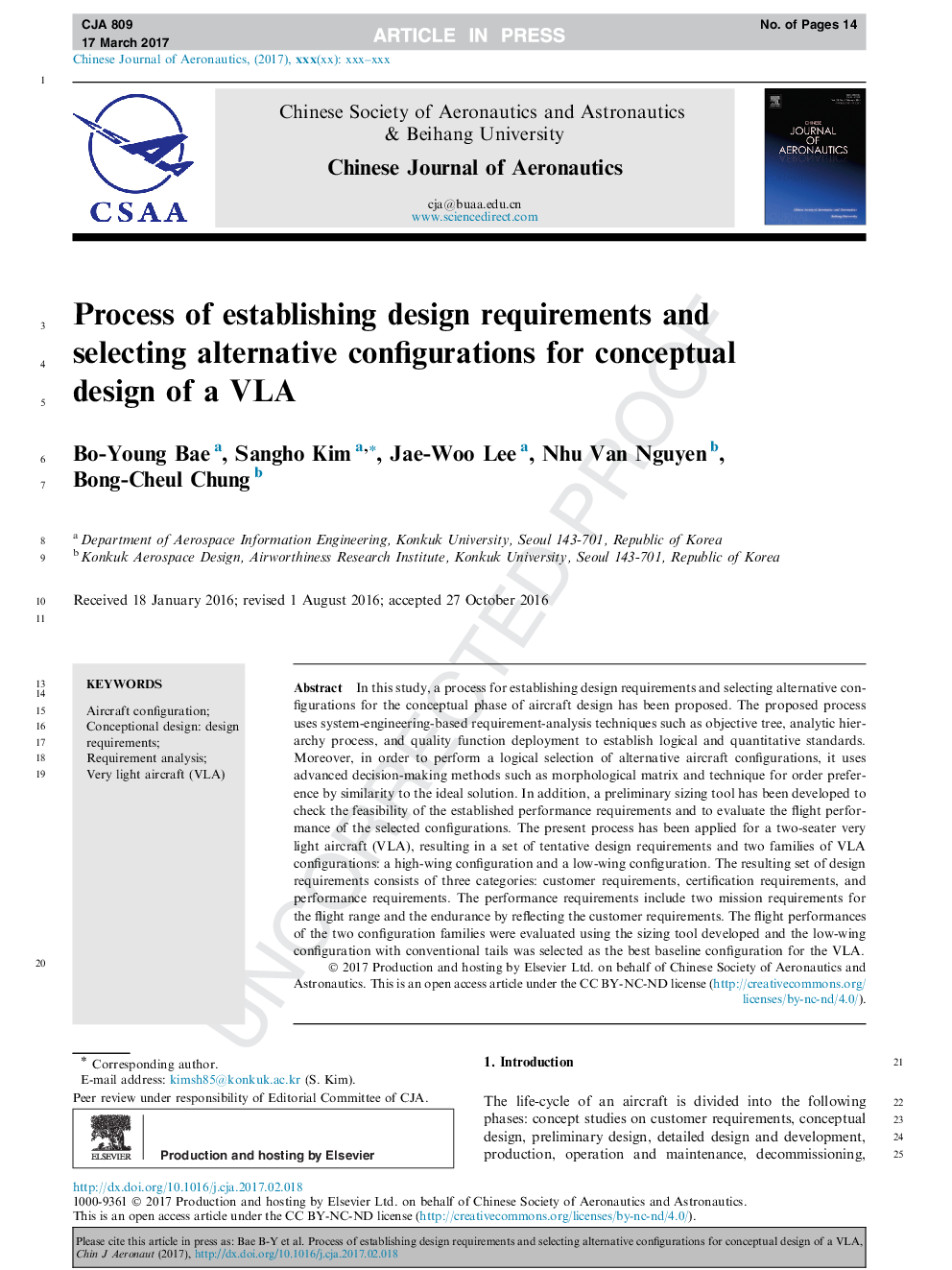| Article ID | Journal | Published Year | Pages | File Type |
|---|---|---|---|---|
| 7154101 | Chinese Journal of Aeronautics | 2017 | 14 Pages |
Abstract
In this study, a process for establishing design requirements and selecting alternative configurations for the conceptual phase of aircraft design has been proposed. The proposed process uses system-engineering-based requirement-analysis techniques such as objective tree, analytic hierarchy process, and quality function deployment to establish logical and quantitative standards. Moreover, in order to perform a logical selection of alternative aircraft configurations, it uses advanced decision-making methods such as morphological matrix and technique for order preference by similarity to the ideal solution. In addition, a preliminary sizing tool has been developed to check the feasibility of the established performance requirements and to evaluate the flight performance of the selected configurations. The present process has been applied for a two-seater very light aircraft (VLA), resulting in a set of tentative design requirements and two families of VLA configurations: a high-wing configuration and a low-wing configuration. The resulting set of design requirements consists of three categories: customer requirements, certification requirements, and performance requirements. The performance requirements include two mission requirements for the flight range and the endurance by reflecting the customer requirements. The flight performances of the two configuration families were evaluated using the sizing tool developed and the low-wing configuration with conventional tails was selected as the best baseline configuration for the VLA.
Related Topics
Physical Sciences and Engineering
Engineering
Aerospace Engineering
Authors
Bo-Young Bae, Sangho Kim, Jae-Woo Lee, Nhu Van Nguyen, Bong-Cheul Chung,
